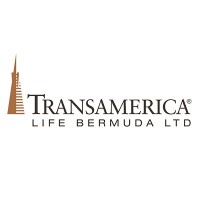The Results of TCRS’ 18th Annual Retirement Survey
Only 16% of employers are “very confident” that their employees will be able to achieve a financially secure retirement, according to a study released today, Striking Similarities and Disconcerting Disconnects: Employers, Workers, and Retirement Security, by nonprofit Transamerica Center for Retirement Studies® (“TCRS”). As alarming as this might be, particularly given the important role of employers, the survey finding is consistent with the 18% of workers who are “very confident” that they will be able to fully retire with a comfortable lifestyle.
As part of its 18th Annual Retirement Survey, TCRS surveyed 1,825 employers of for-profit companies with five or more employees to learn how they are helping their employees prepare for retirement. The study also provides context by comparing the employer survey findings with TCRS’ survey of 6,372 workers.
Pervasive Disconnects Between Employers and Workers Re:
Retirement “Today, people have the potential to live longer than any other time in history. Many workers now want and need to extend their working lives to financially prepare for longer retirements – but they need support from their employers which they are not yet getting,” said Catherine Collinson, CEO and president of Transamerica Institute and TCRS.
The survey findings illustrate ways in which employers are out of sync with workers in their perceptions and business practices. Key findings include:
- Many Workers Plan to Work Past Age 65, but Will Their Employers Support Them? 82% of employers agree their company is supportive of its employees working past 65.” Only 72% of workers agree that their employer is supportive.
- When Is a Person “Too Old” to Work? Almost two-thirds of employers (65%) say “it depends on the person,” compared to 54% of workers. Among those who provided a specific age, employers consider age 70 (median) “too old” to work, a finding that is younger than workers at age 75 (median).
- Aging-Friendly? Maybe. D & I Policy Statement? Unlikely. Most employers (70%) consider their companies to be “aging friendly” by offering opportunities, work arrangements, and training and tools needed for employees of all ages to be successful in their current role or contribution to the company. In comparison, only 56% of workers consider their employers to be “aging friendly.” Of further note, just 23% of employers have adopted a formal diversity and inclusion policy statement that specifically includes age among other commonly referenced demographic characteristics.
- Few Employers Offer a Formal Phased Retirement Program. Only 20% of employers offer a formal phased retirement program with specific provisions and requirements for employees who want to transition into retirement. In contrast, 47% of workers are envisioning a phased transition by reducing work hours (30%) or working in a different capacity that is less demanding and/or brings greater personal satisfaction (17%).
“Older workers bring wisdom, experience, expertise, and tremendous untapped potential in today’s historically low unemployment environment. Further, a multi-generational workforce can enhance diversity and inclusivity – and foster innovation. By not adopting business practices that can support workers of all ages, employers are missing out on an important opportunity,” said Collinson.
The Current State of 401(k)s and Opportunities to Enhance Retirement Security
“Employer-sponsored retirement plans, including 401(k) and similar employee-funded plans, have proven to be the most effective way to facilitate long-term savings among workers,” said Collinson. “Unfortunately, not all workers have equal access. For example, large companies typically provide more robust benefit offerings than their small business counterparts.” The study examines the current state of 401(k)s and other benefit offerings by small (5 to 99 employees), medium (100 to 499 employees), and large companies (500+ employees).
Key findings that highlight specific opportunities include:
- Retirement Plan Sponsorship Rates Increase With Company Size. 65% of employers offer a 401(k) or similar plan to their employees. However, these plans are more commonly offered by large (92%) and medium companies (86%), and less commonly by small companies (59%).
- Most Non-Sponsors Are Not Planning to Offer a Plan. Among employers that do not offer a 401(k) or similar plan, only 27% say that they are likely to begin sponsoring a plan in the next two years. The most often cited reasons among employers that are not planning to do so include: company is not big enough (58%), concerns about cost (41%), and employees are not interested (22%). There may be cause for optimism with regard to the future, however, as 25% of employers that are not likely to offer a plan say that they would consider joining a multiple employer plan (MEP) offered by a reputable vendor who handles many of the fiduciary and administrative duties at a reasonable cost.
- Few Part-Time Employees Are Eligible to Participate. Among employers that offer a 401(k) or similar plan to their employees, only 41% extend eligibility to part-time workers. The likelihood of extending eligibility to part-time employees is higher among medium (60%) and large companies (54%) than among small companies (37%).
- Adoption of Automatic Enrollment Is Low. 81% of workers find automatic enrollment into a 401(k) or similar retirement plan to be appealing. In stark contrast, only 22% of plan sponsors have adopted automatic enrollment, including 28% of both large and medium companies, and 17% of small companies. Plan sponsors that offer automatic enrollment do so at a default contribution rate of 5% (median) of an employee’s pay.
- Plan Sponsors Can Do More to Assist With Retirement Transition. Workers nearing retirement age can feel overwhelmed by the multitude of difficult decisions they need to make related to transitioning into retirement. The study finds that plan sponsors are not doing much to help employees transition their savings and finances into retirement, and 22% do “nothing.”
- Other Health and Welfare Benefits Can Help Improve Financial Security. In addition to retirement benefits, employee benefits such as health, life, and disability insurance – along with employee assistance, workplace wellness, and financial wellness programs – may enhance workers’ financial security. These benefits may offer protections, mitigate out-of-pocket expenses, and provide additional resources in situations of financial difficulty. While many employers (correctly) believe that their employees find such benefits important, a considerably lower proportion of employers actually offer them.
“Employers play an all-critical role in promoting retirement security among workers, yet it’s important to remember that their raison d’être is running a business. Working together, policymakers and the retirement industry must make it as easy, affordable and worry-free as possible for employers to offer retirement plans along with other employee benefits and flexible retirement options to their employees,” said Collinson. The study offers recommendations for policymakers that can be found here.





